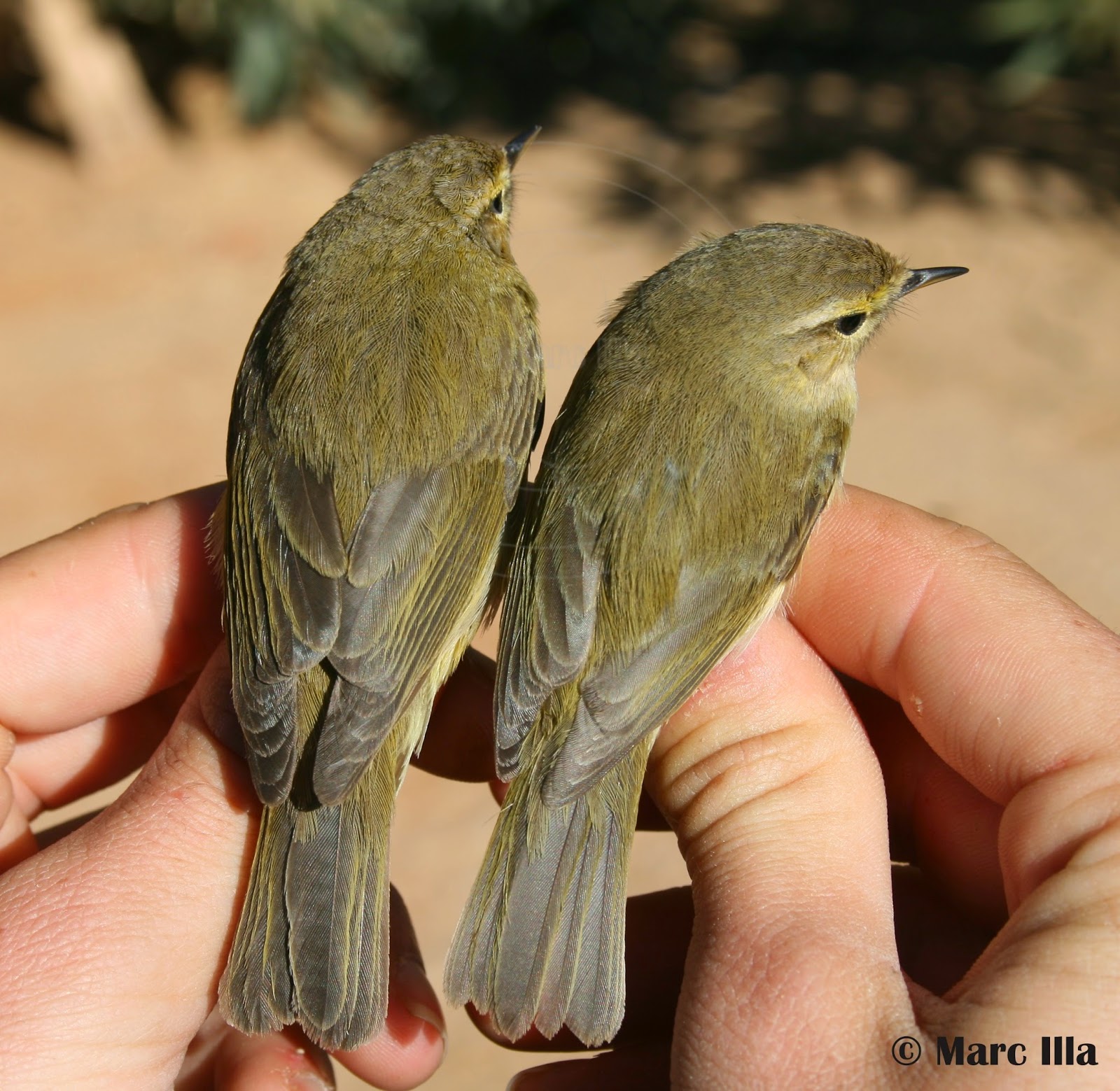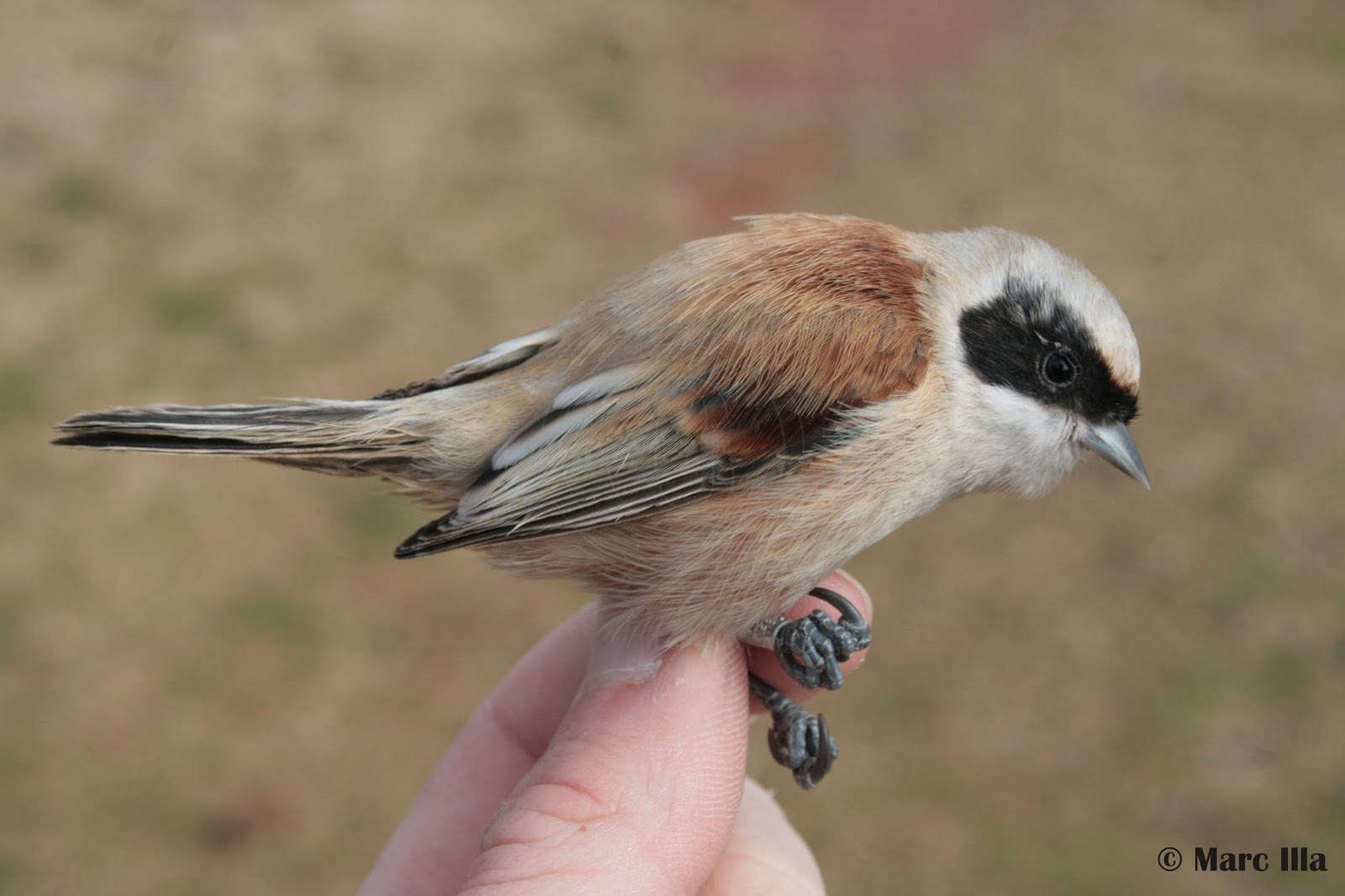
That's exactly what Yasmina lake is: an oasis. For a bird (let's imagine a tiny one, a Willow Warbler for instance) that just has crossed the sandy Sahara, a small (or not that small...) lake, with some tamarisks to hide in and eat some stuff before continue its travel, must be like a paradise for them.
For more information of the ringing campaign and birds around Yasmina, click here.
It actually is a paradise even for people (at least for me). Just take a look...
The lake had some Coots (Fulica atra) displaying, Little Grebes (Tachybaptus ruficollis) and a couple of Crested Grebes (Podiceps cristatus).

Also, between 2 and 4 Ruddy Shelducks (Tadorna ferruginea) came every morning to spend the day in Yasmina.

Going back to the migrating Willow Warbler's mind, le'ts focuse on the friends it will make during its stopover in Yasmina. Ok, February is still a bit early for trochilus... we'll think like an Iberian Chiffchaff (Phylloscopus ibericus) then.

Ibericus are, probably, one of the firsts transaharan species to stop in Yasmina. Down there, they're specially common in passage during February, and it was the main target of our ringing campaign.
Just to make the days more intense, Common Chiffchaff (Phylloscopus collybita) is a common wintering species in desert places like this one. So, without any aim to be very concise in ibericus/collybita ID, I'll put some photos below.

 |
| Ibericus. Depending on the light, camera's WB and some stuff, they can look quite different... |
 |
| Second-year (EURING 5), with some outer primaries moulted |
 |
| Collybita |
 |
| Ibericus to the left, collybita to the right |
Collybitas are not the only presaharan species that reaches the desert. Especially in February, you can see migrating some nice species that maybe you wouldn't expect, like Sardinian Warblers (Sylvia melanocephala).

White Wagtails (Motacilla alba) from the nominate subspecies alba are also common.
We got this nice male Stonechat (Saxicola rubicola) too...

As transaharan species to mention, there was quite movement in Swallows. We trapped some House Martins (Delichon urbicum) -the commonest-, a Barn Swallow (Hirundo rustica) and this very nice Red-rumped Swallow (Cecropis daurica). We saw a few Sand Martins (Riparia riparia) too!



We also had this nice cinereocapilla Yellow Wagtail (Motacilla flava)

3 Hoopoes (Upupa epops) too!


Some Sedge Warblers (Acrocephalus schoenobaenus), that are more likely to be trapped when the lake has water.


Some Sedge Warblers (Acrocephalus schoenobaenus), that are more likely to be trapped when the lake has water.
And this adult male Bluethroat (Luscinia svecica cyanecula), also a water-related species in Yasmina.

.JPG)

It's not fair to end the post without an ode to these flowers that grow in the middle of the sand and that host many birds that really needs something to eat to reach their breeding grounds.

And, obviously, sedentary birds also deserve some lines. House Sparrows (Passer domesticus), Collared Doves (Streptopelia decaocto)...



 |
| We trapped some birds, and we found some 'head-shape and colouration differences between sexes (presumably). Male to the right and in the bottom, respectively. |
Laughing Doves (Streptopelia senegalensis)...




White-headed Wheatears (Oenanthe leucopyga)...


I could take proper photos of it, but, unexpectedly, this male Desert Sparrow (Passer simplex) appeared very close to us, coming to eat some dromedary shit in Yasmina Hotel!!






























